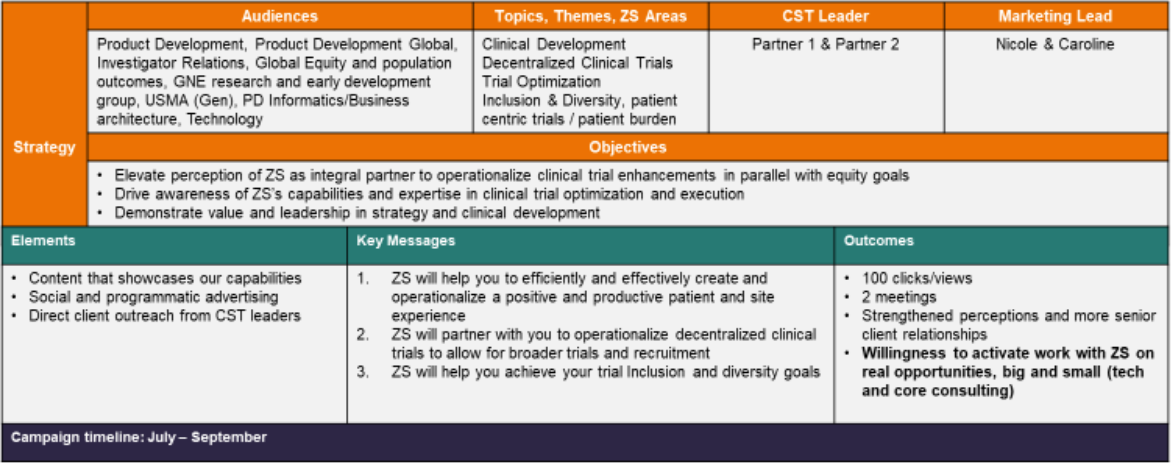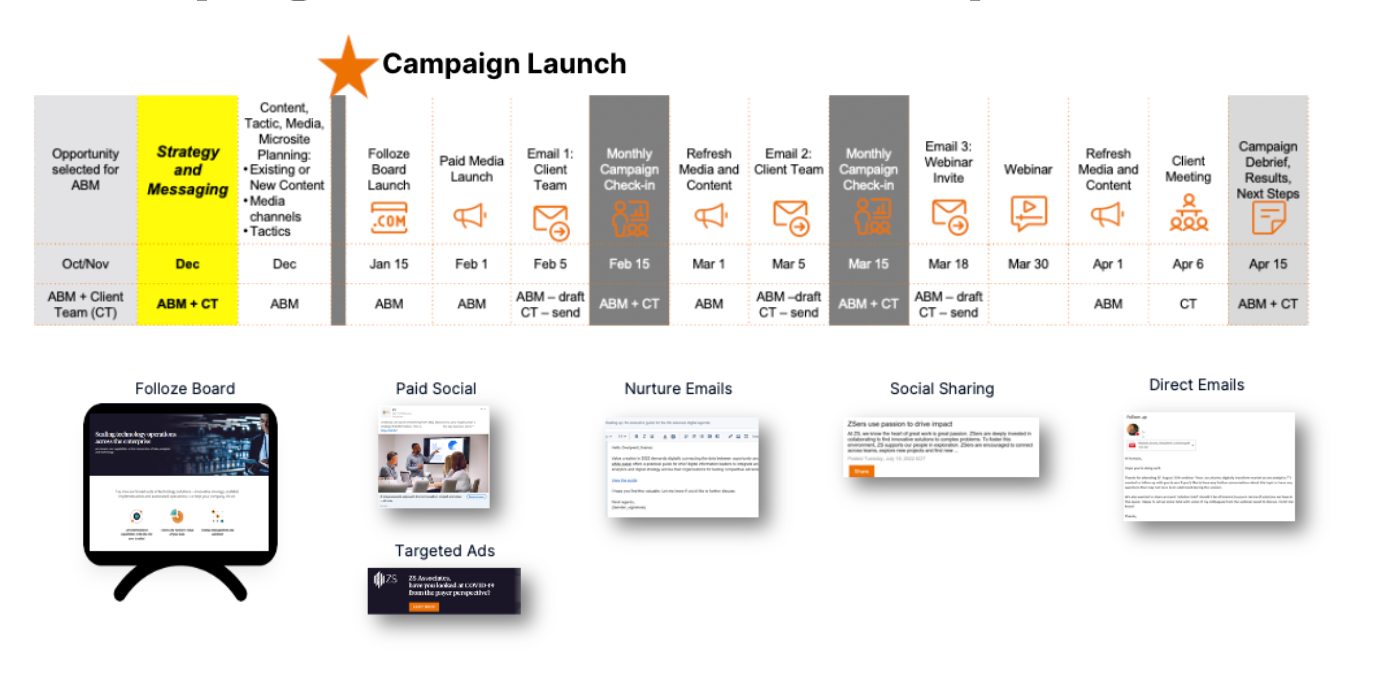Healthcare management consulting and technology firm ZS wanted to nurture relationships and expand business with their existing customers, a core part of business strategy. To achieve these goals, they launched a strategic 1:1 account-based marketing program. a
Nicole Huber, Head of Account-based Marketing, and her small team of ABM marketers were up to the challenge. In just one year, they activated more than 25 opportunity-focused campaigns, each featuring personalized messaging and content that drove key buying groups to a personalized Folloze board.
Nicole recognized early on that tight alignment between sales and marketing and delivering personalized and engaging customer experiences would be critical to their success. Nicole identified four key steps that became the key components of her ABM playbook.
- Research your Customer
- Develop the Campaign Strategy
- Activate your Campaign
- Real-time Monitoring for Real-time Adjustments
Step 1: Research your Customer
- Gather Client Team Insights: The ABM team partnered with their Client teams (sales) to gather detailed intelligence about each target account. They reviewed comprehensive Client Account plans and met frequently with the Account Executive sponsors to have a thorough understanding of each client account.
- Research Intent & Buyer Behavior data: ZS leveraged intent data from Demandbase to understand what their clients were researching on their own, yes, they dreaded dark funnel. They also analyzed their customer’s buyer behavior from their web properties to understand what was capturing their interest in real-time.
- Select the Right Opportunities: Armed with intent and buyer behavior, the teams could identify the best opportunities to pursue. They focus on opportunities that are high value, achievable, and that have an internal partnership commitment
Step 2: Develop the Campaign Strategy
The first part of this step is to determine the audience segments, key themes, and KPIs. The KPIs are an excellent way of aligning sales and marketing teams from the leaders through to the strategists and executors. The ABM and Client team jointly discuss how best to reach their target audiences. The ZS team captures all of these details on the Strategy on a Page Document to ensure alignment with the Client team.
The second part of this stage is to develop the messaging framework for each target account. Armed with the knowledge they gained from the research phase, they can create personalized relevant messaging for each target account. They can also identify the appropriate existing content to use as part of the campaign.

Step 3: Campaign Activation
Now comes the fun part, activation. Campaign activation is well-orchestrated between the ABM and Client teams. The audience, channels, cadence and messaging, and personalized Folloze board is specific per account. Each team, the ABM and Client teams, play an important part during the campaign activation phase.
ABM- Led Channels
-
Programmatic account-specific ads
-
Account-specific sponsored social
-
Account-specific events
-
Email nurture series
Client Team Led Channels
-
Direct outreach to key buyers
-
Social sharing

Step 4: Real-time Monitoring for Real-Time Adjustments
The ABM team shares campaign performance, content performance, and client engagement activity with the client team on a regular basis. The data can be used to make adjustments to improve overall campaign efficacy and to recommend specific follow-up suggestions for the Client team including:
-
Who to contact
-
What to send
-
What to ask or say
